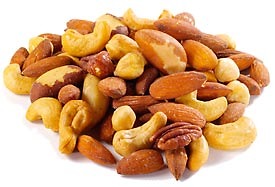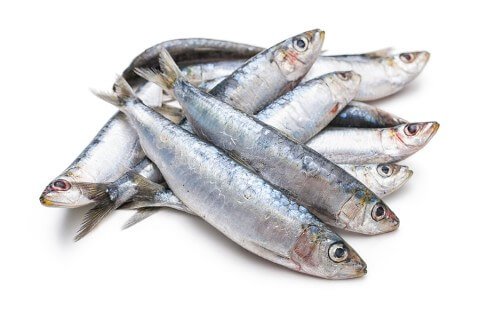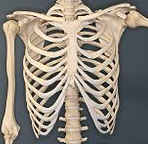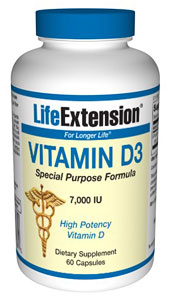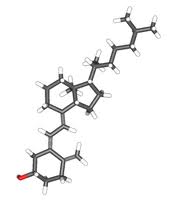
An estimated 50-70% of adults are at risk of the bone disease, osteoporosis and other health problems, as a result of a deficiency in vitamin D.
The International Osteoporosis Foundation (IOF) today published evidence of what is describes as “a major public health issue” with a global map of vitamin D status worldwide.
“The map and accompanying publication[1] confirm that vitamin D insufficiency is a major public health issue in both the developing and industrialized world, with more than one third of all the populations studied, showing insufficient levels of vitamin D[2],” says the IOF.
DSM, the life science company, which contributed to developing the data and the map, strongly supports IOF’s call for healthcare decision makers to take immediate action to address vitamin D insufficiency as a priority public policy issue, and emphasize the role of supplementation as a key tool for addressing this problem.
Key findings include:
· Overall, insufficient vitamin D levels were detected in more than one third of the study population[3]
· Vitamin D insufficiency affects both the developing world and industrialized world
· The main source of vitamin D is sunlight, but even in sunny countries, vitamin D levels are generally low and below recommended levels (taking India as example: a sunny country; yet, with low vitamin D status)
· Rates of vitamin D insufficiency are higher amongst women than men
· It is estimated that 50 -70 % of the European adult population have insufficient levels of vitamin D
· In US adults, vitamin D insufficiency estimates range from 20% (non-Hispanic whites) – 70 % (non-Hispanic blacks).
· Older people are especially at risk for vitamin D insufficiency, including older women who are a risk group for osteoporosis, and those living indoors in institutionalised care.
Osteoporosis is a serious chronic disease which affects hundreds of millions of people worldwide. Vitamin D improves bone mineral density, which lowers risk of fracture, whilst also improving muscle strength, balance, and leg function which decreases the risk of falling and sustaining a fracture in the first place. As a consequence, vitamin D insufficiency has been linked to a higher risk of osteoporotic fractures.
Studies show that adequate vitamin D can reduce the risk of falls and fractures by around 30%[4]. In Germany, research indicated that regular vitamin D supplements can help achieve healthcare cost savings of between Euro 585-778 million in one country alone[5].
Judy Stenmark, CEO of the International Osteoporosis Foundation commented: “IOF urges people at risk of osteoporosis and generally all seniors aged 60 years and older to ensure optimal levels of vitamin D. In these high risk groups IOF recommends 800-1000 IU/day supplementation for fall and fracture prevention. With the launch of these maps, we are calling on health professionals to be aware of the status of vitamin D insufficiency within their own country and urge them to take simple and inexpensive steps to correct it. This will ultimately improve, and even save, lives.”
Prof. Heike Bischoff-Ferrari, DrPH, Director Centre on Aging and Mobility, University of Zurich added: “The reality is that natural production of vitamin D through sunlight decreases with age, and it is very difficult to achieve sufficient vitamin D through diet alone, especially in the senior population. The good news is that vitamin D supplementation offers an effective, inexpensive, and safe public health strategy that can make a significant difference to people’s health and quality of life, by reducing 30% of falls and hip fracture4.”
Dr Manfred Eggersdorfer, Senior Vice President Nutrition Science & Advocacy DSM commented: “The maps are a major advance in the fight against vitamin D deficiency. We know that vitamin D deficiency is linked to serious diseases such as rickets in children and osteoporosis in the elderly, but our understanding of the scale and extent of the problem was far too limited. We now have a much better understanding of the picture of vitamin D insufficiency, and confirmation of its importance as a global public health issue.
The map has also created a very clear picture as to where the vitamin D insufficiency knowledge gaps exist and where further research is required. Dr Eggersdorfer added, “There is far too little data available, for example, in relation to adolescents and young people, and across the developing world in general. These maps are an important starting point, but it is essential that research continues to better understand the scale of vitamin D insufficiency.”
DSM joins IOF in calling on healthcare policymakers to raise awareness of vitamin D insufficiency and to take action to ensure intake of recommended vitamin D levels, including through safe and effective measures such as food fortification, access to proper supplements and better consumer education.
About the map – drawing on scientific studies from across the world, the maps color code levels of vitamin D status based on national scientific data, with green indicating an optimal/desirable vitamin D status, and yellow as (in-) adequate or suboptimal. Orange highlights vitamin D blood levels below 50 nmol/l which are considered insufficient, and red indicates severe vitamin D deficiency (below 25nmol/l) based on a sliding scale[6]. The maps will be updated annually and provide researchers, medical practitioners and policymakers with an invaluable resource in the fight against vitamin D deficiency.
Additional country findings include:
· In Germany 57% of men and 58% of women had vitamin D status below recommended levels, rising to 75% amongst 65-79 year olds
· UK studies focused on older people reveal that nearly two thirds of women (57%), and half of men (49%) are not getting enough vitamin D
· In the Netherlands, around half of all study participants had sub-optimal vitamin D levels
· In the US, around 30% of the study population has sub-optimal vitamin D levels, rising to around 70% amongst participants with black skin color, highlighting skin color as a risk factor for vitamin D insufficiency. Overall the US vitamin D status was significantly higher compared to other regions, which may in part, be attributable to the routine fortification of foods with vitamin D (such as milk, juice and cereals)
· The Middle East revealed lower vitamin D status compared to Europe which could result from cultural factors such as clothing and lifestyle.
· Asia showed a widespread insufficient vitamin D status across different countries. with a few exceptions (vitamin D status was ranked desirable in Taiwan, Thailand and Vietnam )
· Most regions offer some data, however no informa
tion was available for Central America, South America (except Brazil) and much of Africa.
· The most striking data gaps are found in children and adolescents
For further information and interview requests with Professor Heike Bischoff-Ferrari (University of Zurich) and Dr. Manfred Eggersdorfer, DSM, please contact:
DSM – Bright Science. Brighter Living.™
Royal DSM is a global science-based company active in health, nutrition and materials. By connecting its unique competences in Life Sciences and Materials Sciences DSM is driving economic prosperity, environmental progress and social advances to create sustainable value for all stakeholders. DSM delivers innovative solutions that nourish, protect and improve performance in global markets such as food and dietary supplements, personal care, feed, pharmaceuticals, medical devices, automotive, paints, electrical and electronics, life protection, alternative energy and bio-based materials. DSM’s 22,000 employees deliver annual net sales of around €9 billion. The company is listed on NYSE Euronext. More information can be found at
www.dsm.com
